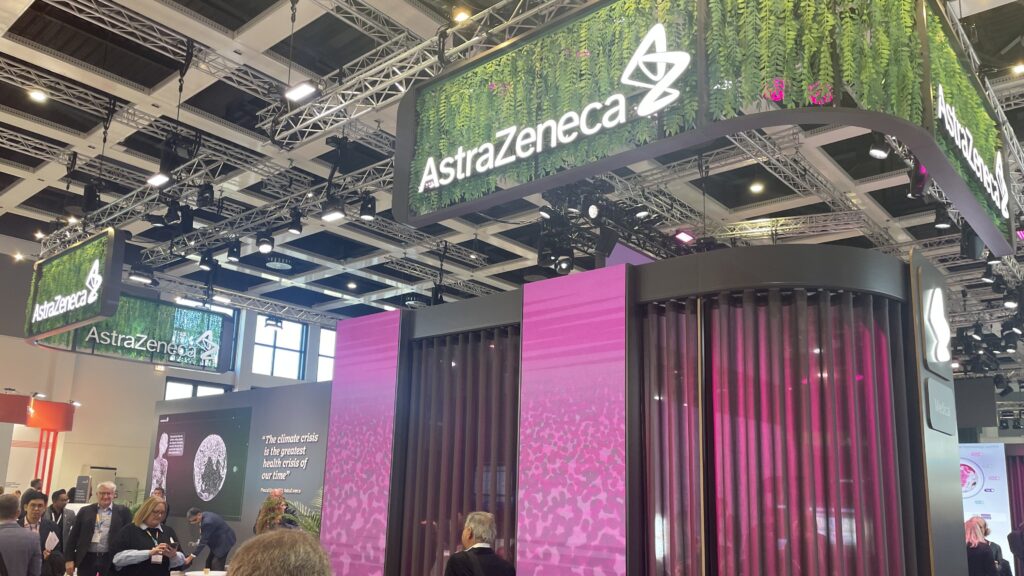Europe’s leading cancer conference may be swimming in antibody-drug conjugate (ADC) data, but AstraZeneca remains convinced that its in-house pipeline sets the pharma apart.
The U.K.-based drugmaker has earned its ADC credentials through the blockbuster Enhertu and then sealed the deal with the approval of Datroway at the start of the year. Both of those therapies emerged from a collaboration with Daiichi Sankyo, but AstraZeneca executives told Fierce Biotech earlier this year that the next chapter of the pharma’s ADC story involves “a conscious effort to invest significantly” in its internal pipeline.
This means relying on AstraZeneca’s own linker and topoisomerase I payload technologies, which have resulted in seven in-house ADCs aimed across solid tumors and hematological malignancies. AstraZeneca used a presentation at ESMO in Berlin on Saturday to unveil some fresh data from the first-in-human study of one of these assets: a folate receptor α (FRα) -targeted ADC called AZD5335.
In the phase 1/2a study of 189 patients with platinum-resistant ovarian cancer, AZD5335 demonstrated efficacy across the 1.6 mg/kg to 2.4 mg/kg dose range, AstraZeneca explained in its Oct. 18 presentation, with 56.2% of patients in those trial cohorts not seeing their cancer worsen at a median follow-up of 7.8 months.
The overall response rate was 56%, 56.1% and 49.2% for the 1.6 mg/kg, 2 mg/kg and 2.4 mg/kg cohorts, respectively, AstraZeneca said.
Matt Hellmann, Vice President, Early Oncology Development at AstraZeneca, told Fierce that the response rate “looks great” and “validates the platform.”
“That shows that we have an incredibly stable linker payload, which is at the core of building a portfolio for the future,” Hellmann said in an interview on the sidelines of this weekend’s conference.
Related
“We’ve learned from Enhertu and from Datroway,” Hellmann added. “I think because of those successes—that are really landing here—we’ve invested over the long haul in building a proprietary ADC portfolio that is aimed towards trying to deliver the thesis that ADCs can displace chemotherapy.”
When it came to tolerability, the most common treatment-related adverse event was neutropenia, with cases rated grade 3 or above impacting 45.9% of patients who received the 2.4 mg/kg dose.
Hellmann said the safety profile “across the range of doses was very reassuring,” noting the “absence of really important toxicities” in the 1.6 mg/kg and 2 mg/kg dose cohorts.
“The other thing I’d highlight from the safety data is that there were no unexpected side effects,” he told Fierce. “So the side effects are attributable to the payload, and there wasn’t an unexpected off-target toxicity.”
This year’s ESMO serves as a reminder that there are plenty of other companies looking to take a slice of the next-gen ADC market. But Hellmann was relaxed about AstraZeneca maintaining its own position.
“One of the things that we’re really proud of is investing in-house in the technology to build this portfolio,” he said. “That allows us to build this next wave of molecules, but also continue to innovate in the linker-payload library.”
Without singling out any competitors, Hellmann noted that many companies have bought their way into the ADC space by M&A or licensing deals for specific assets.
“I think we’re one of the very few that have invested in building [a] platform and the surface marker library, so that we can put the right targets with the right warheads in a multiplicity of ways,” he said.



